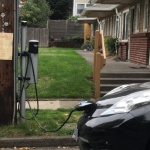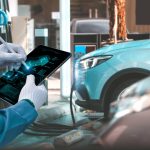Let’s be honest—electric trucks are no longer a futuristic concept. They’re here, hauling freight, reducing emissions, and quietly reshaping the logistics industry. But here’s the deal: without a robust charging infrastructure, even the most advanced electric trucks hit a dead end. So, what’s the current state of charging networks, and where are we headed? Buckle up.
The Current Landscape of Electric Truck Charging
Right now, electric truck charging infrastructure is… patchy. Think of it like early cell phone coverage—spotty in rural areas, stronger in cities, and with plenty of dead zones. But momentum is building. Here’s where things stand:
- Megawatt Charging Systems (MCS): The new gold standard for heavy-duty trucks, delivering ultra-fast charging (think 30 minutes for a full charge).
- Public vs. Private Stations: Most fleets rely on depot charging, but cross-country routes demand public networks—still in their infancy.
- Regional Hotspots: California, the EU, and China lead the charge (pun intended), while other regions lag.
And here’s a kicker: the U.S. had just 1,200 public heavy-duty charging ports in 2023. For context? There are over 4 million Class 8 trucks on American roads. Yikes.
Key Challenges Holding Back Progress
1. Grid Capacity (Or Lack Thereof)
Charging a fleet of electric trucks isn’t like plugging in a few Teslas. We’re talking massive energy draws—enough to power small towns. Utilities are scrambling to upgrade grids, but it’s a slow, expensive process.
2. “Where Do We Plug In?” — The Location Dilemma
Truck stops? Warehouses? Highways? No one’s quite nailed the ideal charging station placement yet. And let’s not forget rural areas, where infrastructure is thinner than a trucker’s last cup of diner coffee.
3. Cost and ROI Uncertainty
Building a single MCS station can cost $500,000+. Fleets and investors need clarity on long-term savings—something that’s still hazy with fluctuating energy prices.
Future Developments: What’s Coming Next?
Okay, enough doom and gloom. The future’s brighter than a high-beam headlight. Here’s what’s on the horizon:
1. Battery Swapping Stations
Why wait hours to charge when you can swap a depleted battery for a fresh one in minutes? China’s already testing this for trucks, and it could be a game-changer for long-haul routes.
2. Solar-Powered Charging Corridors
Imagine highways lined with solar canopies doubling as charging stations. Pilot projects in Germany and the U.S. are exploring this—turning sunlight into truck fuel.
3. Smart Charging and AI Optimization
AI could soon manage charging schedules, balancing grid loads and prioritizing low-cost energy windows. Think of it as a traffic cop for electrons.
The Role of Policy and Private Investment
Governments aren’t just watching from the sidelines. The U.S. Inflation Reduction Act pumps $7.5 billion into EV charging, while the EU’s Alternative Fuels Infrastructure Regulation mandates charging hubs every 60 km by 2030. Private players? Companies like Tesla, Volvo, and Shell are betting big, too.
But—and this is a big but—progress hinges on collaboration. Utilities, truck makers, and policymakers need to sync up like a well-timed gear shift.
Final Thoughts: The Road Ahead
Electric truck charging infrastructure isn’t just about plugging in vehicles. It’s about rewiring an entire industry. Sure, there are potholes ahead, but the direction is clear. The question isn’t if we’ll get there—it’s how fast, and how smart.










